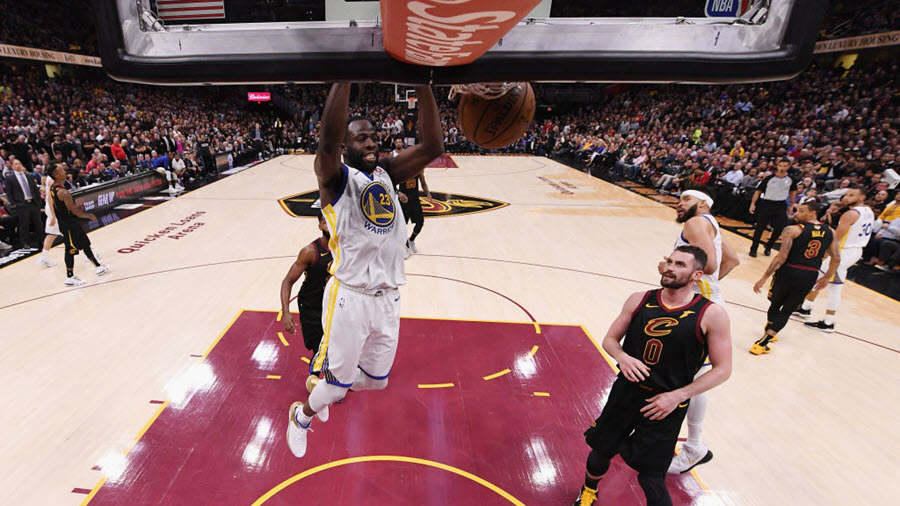Sports Media Rights Growing 4.5%, According to PwC

Media rights are the largest component of the sports industry market in North America and are projected to be the fastest growing, according to a new report from PwC.

Gambling will soon become a driver of the sports business, PwC added.
PwC expects sports rights to climb to $29.141 billion in 2018 and grow at a 4.5% compounded annual rate from 2017 to $23.803 in 2022.
Sponsorship revenue is projected to hit $17.169 billion in revenue in 2018 and grow at a 3.8% to $20.089 billion rate, PWC said. Overall it expects sports revenue, including ticket sales and merchandising, to be $71.186 billion in 2018 and grow at a 3% rate to $80.297 billion in 2022.
Related: Legal Gambling Could Spur Bettors to Watch TV
Most major sports are in the middle of long-term deals, which makes their growth rate fairly predictable, PwC said.
“With key deals underlying the media rights segment locked in until 2022, the growth of rights in the near term are driven by contractual escalators within the national deals, as well as the run-off of 16 regional sports network deals across MLB, NBA and NHL through 2020.
Broadcasting & Cable Newsletter
The smarter way to stay on top of broadcasting and cable industry. Sign up below

The monetization of rights should remain strong with digital giants like Google, Facebook and Amazon appearing increasingly interested in streaming live sports.
“The monetization of rights should remain strong through the beginning of the next national rights deal cycle, given increasing competition for rights among traditional broadcast intermediaries and emerging distribution partners,” PwC said.
PwC said that with the Supreme Court in May striking down the Professional and Amateur Sports Protection Act of 1992 which made sports betting illegal, gambling is expected to add to the coffers of sports leagues.
Some league are seeking an “integrity fee” from the gambling industry in exchange for the rights to use team and player names. “Assuming that a mature legalized sports gambling industry could generate an annual handle of $100 billion (in 2017, the total handle in Nevada alone was $4.8 billion), a 1%t integrity fee would yield $1 billion to the leagues (and potentially collegiate athletics as well) to split. There is potentially a lot of money at stake,” PwC said.
Related: Media and Telecom M&A Adds Up to $44.9B in 2Q
Sports leagues are also making sponsorship deals with companies in the gambling business. The NBA and NHL have signed partnerships with MGM Resorts.
“Signs point to legalized sports gambling having a positive impact on media rights deals for leagues and teams,” the report added. “According to a September 2018 Nielsen sports study, commissioned by the American Gaming Association, NFL media rights are projected to increase by nearly 18% percent because of the appetite of bettors looking to consume live sports events.”
Media rights will also be getting a boost from digital companies interested in bidding against incumbent TV broadcasters. The big year for those rights starts in 2022, when the NFL and Major League Soccer’s deals run out. The NHL’s contract with Comcast expires in 2021 and the NBA’s deals run through 2025.
PwC notes that Twitter and Amazon have already completed one-year $10 million and $50 million deals, respectively, with the NFL for non-exclusive U.S. rights to stream live Thursday Night games. Amazon and the NFL re-upped for two additional seasons at $130 million, giving Amazon’s Prime Video subscribers additional content. Facebook’s deal with MLB to broadcast 25 weekday afternoon games is noteworthy because it negotiated exclusive streaming rights.
The digital giants can help reach younger viewers who are cutting the cord with traditional pay TV.
“No matter how consumers experience live sports (in 2023 and beyond) across their devices, channels and apps, one thing is for sure—all signs point to an increase in competition for sports media rights which could yield a significant rights fee increase,” PwC said.
Jon has been business editor of Broadcasting+Cable since 2010. He focuses on revenue-generating activities, including advertising and distribution, as well as executive intrigue and merger and acquisition activity. Just about any story is fair game, if a dollar sign can make its way into the article. Before B+C, Jon covered the industry for TVWeek, Cable World, Electronic Media, Advertising Age and The New York Post. A native New Yorker, Jon is hiding in plain sight in the suburbs of Chicago.

